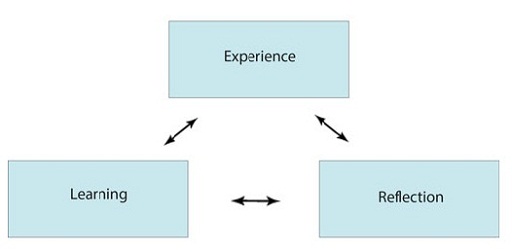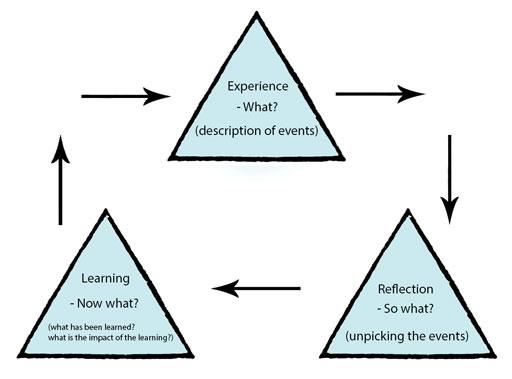6.1 Models of reflection
There are many different models of reflection as a quick search online will prove. Using models, or at least being aware of their similarities and differences, can help you to deconstruct experiences, ensure you are accessing the deeper level reflective questions and issues, and ultimately provide a way to structure your learning from situations.
Boud’s triangular representation
Many models are cyclical in nature, representing the idea that reflection leads to learning, but this learning is never completed or able to be transferred without reflecting on it further in different contexts. The most simple model could be seen to be Boud’s triangular representation, Figure 2.
This model, although capturing the essentials (that experience and reflection lead to learning), has limitations. It doesn’t guide us as to what reflection might consist of, or how the learning might translate back into experience. Aligning key reflective questions to this model, see Figure 3, may help.


